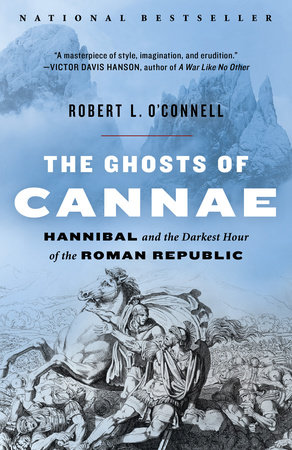Excerpt
The Ghosts of Cannae
Chapter OneTraces of WarPolybius of Megalopolis peered down from a pass high in the Italian Alps and caught sight of the rich green Lombard plain far below. It was exactly the same inviting panorama Hannibal had shown his half-starved, half-frozen, thoroughly discouraged army seventy-three years before, exhorting them to stay the course on what would prove to be an amazing path of conquest. Quite probably enough bits and pieces of that weary host remained visible for Polybius to be sure he was in the right spot; a certitude denied future chroniclers, and giving rise to one of ancient history’s most enduring and futile controversies: Where exactly did Hannibal cross the Alps?1 Polybius, for his part, was free to concentrate on questions he found more important. It was his aim—an endeavor that would eventually fill forty books—to explain to his fellow Greeks how a hitherto obscure city-state on the Italian peninsula had come to dominate, virtually in the course of a lifetime, the entire Mediterranean world. But if Rome stood at center stage in Polybius’s inquiry, Hannibal and Carthage were his foils. Each in their own way had nearly put an end to Rome’s ambitions. Both by this time were dead, obliterated by Rome, but it was the challenges they had posed and the disasters they had inflicted that Polybius found most compelling. For no matter how bad things had gotten, Rome had always responded, had picked itself up out of the dustbin of history and soldiered on. And it was in defeat more than victory that Polybius saw the essence of Rome’s greatness.
It never got worse than Cannae. On August 2, 216 b.c., a terrible apocalyptic day in southern Italy, 120,000 men engaged in what amounted to a mass knife fight. At the end of the fight, at least forty-eight thousand Romans lay dead or dying, lying in pools of their own blood and vomit and feces, killed in the most intimate and terrible ways, their limbs hacked off, their faces and thoraxes and abdomens punctured and mangled. This was Cannae, an event celebrated and studied as Hannibal’s paragon by future practitioners of the military arts, the apotheosis of the decisive victory. Rome, on the other hand, lost—suffering on that one day more battle deaths than the United States during the entire course of the war in Vietnam, suffering more dead soldiers than any other army on any single day of combat in the entire course of Western military history. Worse yet, Cannae came at the end of a string of savage defeats engineered by the same Hannibal, Rome’s nemesis destined to prey on Italy for another thirteen years and defeat army after army and kill general after general. Yet none of this would plumb the depths reached on that awful afternoon in August.
It has been argued that Polybius, aware of Cannae’s enormous symbolic import, deliberately structured his history so as to make the battle appear as the absolute low point in Rome’s fortunes, thereby exaggerating its significance.2 Yet, not only do sheer numbers argue the contrary, but also Rome on this day lost a significant portion of its leadership class, between a quarter and a third of the senate, the members of which had been anxious to be present at what had been assumed would be a great victory. Instead it was a debacle by any measure, so much so that a case can be made that Cannae was even more critical than Polybius believed, in retrospect a true pivot point in Roman history. Arguably the events of this August day either initiated or accelerated trends destined to push Rome from municipality to empire, from republican oligarchy to autocracy, from militia to professional army, from a realm of freeholders to a dominion of slaves and estates. And the talisman of all of this change was one lucky survivor, a young mili- tary tribune named Publius Cornelius Scipio,* known to history as Africanus. For at the end of many more years of fighting, Rome still would need a general and an army good enough to defeat Hannibal, and Scipio Africanus, with the help of what remained of the battlefield’s disgraced refugees, would answer the call and in the process set all else in motion.
* Typical Roman names of the late republican period had three elements: a praenomen, or given name (in this case Publius), chosen from a limited list and having no family connotation; a nomen, referring to the gens or clan name (Cornelii); and, finally, the cognomen, or family within the clan (Scipio).




